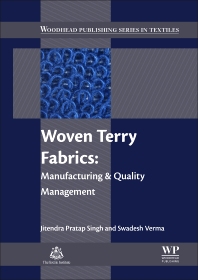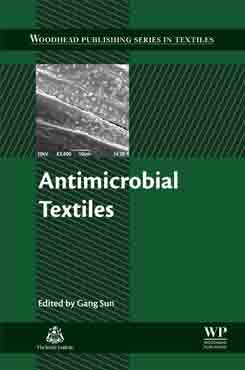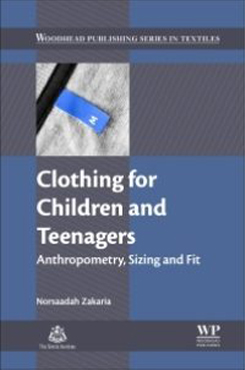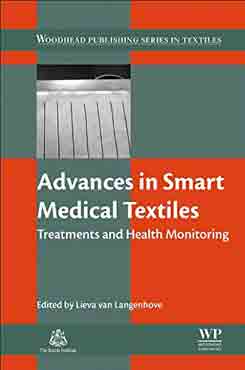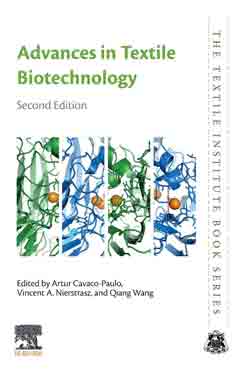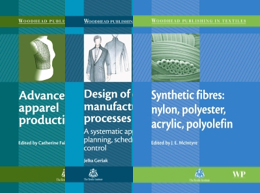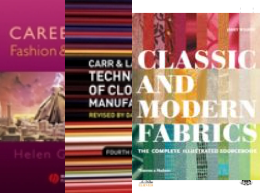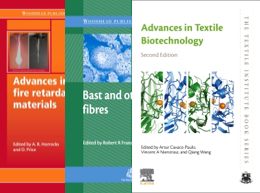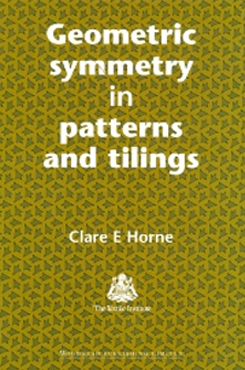Description
Woven Terry Fabrics: Manufacturing and Quality Management encompasses all aspects of terry fabric production, from raw material choice and weave design to technological developments, dyeing, and quality evaluation. Nothing feels more luxurious and comforting than wrapping myself or one of my children in a thick, soft, fluffy towel after bathing says Lindsey, a healthcare administrator and mother of two children in Boston.
Consumers pay an average 15 USD for a bath towel. So, it has become a luxury item today. To meet the demand of growing population, the terry fabric industry has grown to a large extent. Lots of technological developments have taken place in this field.
Key Features
- Provides an excellent overview of the best production methods, quality control systems, latest research, and process parameters
- Offers in-depth information on all aspects of production
- Covers comprehensively, for the first time, the whole process from raw material through to finished fabric
- Includes coverage of technological developments
Readership
Industry professionals and undergraduate and postgraduate students.
Table of Contents
-
- 1: Overview of terry fabrics, properties, application and care
- Abstract
- 1.1 Introduction
- 2: Evolution of terry fabrics
- Abstract
- 2.1 Definition and history
- 2.2 Classification of towelling fabrics
- 2.3 Weft pile fabrics
- 2.4 Warp pile fabrics
- 2.5 Different component of terry towel and technical terms
- 3: Raw materials for terry fabrics
- Abstract
- 3.1 Introduction
- 3.2 Selection of fibre
- 3.3 Fibre characteristics
- 3.4 Cotton
- 3.5 Wool
- 3.6 Silk
- 3.7 Summary
- 4: Yarns for terry fabrics
- Abstract
- 4.1 Introduction
- 4.2 Ring spinning system
- 4.3 Rotor spinning system
- 4.4 Air-jet spun yarn
- 4.5 Friction spun yarn
- 4.6 Wrap spun yarn
- 4.7 Yarn structure modifications
- 4.8 Factors affecting the yarn structure
- 4.9 Selection of fibres and yarns according to ends use
- 5: Winding yarn for terry fabrics
- Abstract
- 5.1 Introduction and objective
- 5.2 Different process sequences in the winding section
- 5.3 Parallel winding machine
- 5.4 Yarn twisting machine (TFO)
- 5.5 Rewinding machine
- 5.6 Tensioners
- 5.7 Yarns clearer
- 5.8 Process control in winding
- 5.9 Process parameters
- 5.10 Performance in winding
- 5.11 Control of productivity
- 6: Warping for terry fabrics
- Abstract
- 6.1 Introduction
- 6.2 Warping
- 6.3 Warping the terry ground
- 6.4 Warping the pile warp
- 6.5 Process control in warping
- 7: Sizing the terry warp
- Abstract
- 7.1 Introduction and objective
- 7.2 Sizing machine
- 7.3 Methods of drying
- 7.4 Splitting
- 7.5 Beaming
- 7.6 Prewetting of yarns before sizing
- 7.7 Quality evaluation of sized yarns
- 7.8 Sizing materials
- 7.9 Controls on a modern sizing machine
- 8: Weaving of terry fabrics
- Abstract
- 8.1 Introduction
- 8.2 Major reference point of the loom
- 8.3 Process of drawing-in and denting-in
- 8.4 Terry weaves
- 8.5 Figured terry pile fabrics
- 8.6 Important methods for producing woven terry fabrics
- 8.7 Patterns on terry fabric
- 8.8 Terms and calculations for woven terry fabric
- 9: Wet processing
- Abstract
- 9.1 Introduction
- 9.2 Mechanism of dyeing
- 9.3 Factors affecting dyeing uptake
- 9.4 Dyeing machines
- 9.5 Drying
- 9.6 Colour sensitivity test for human eye
- 10: Shearing and printing of terry fabrics
- Abstract
- 10.1 Introduction and objective
- 10.2 The shearing machine
- 10.3 Printing machine
- 11: Cutting, sewing and packing
- Abstract
- 11.1 Introduction
- 11.2 Stitching
- 11.3 Thread
- 11.4 Hemming styles
- 11.5 Needle
- 11.6 Manufacturing technology
- 12: Modern quality management systems
- Abstract
- 12.1 Introduction
- 12.2 Quality systems
- 12.3 National quality awards
- 12.4 Quality control in terry towelling manufacturing
- 12.5 Testing parameters and test methods
- 12.6 Acceptance sampling for final inspection
- 13: Properties and performance of woven terry fabrics
- Abstract
- 13.1 Introduction
- 13.2 Absorbency
- 13.3 Compressibility
- 13.4 Aesthetic properties
- 13.5 Air permeability
- 13.6 Comfort
- 13.7 Durability and serviceability
- 14: Hand evaluation of woven terry fabric
- Abstract
- 14.1 Introduction
- 14.2 New primary hand equations BJ-101, BJ-102, BJ-103 and BJ-104
- 14.3 New total hand equation (BJ-105)
- 14.4 Contribution of various primary hand equations to the total hand of terry fabric
- 14.5 Prediction accuracy
- 14.6 Experimental verification with the test results from regular KES sensor
- 14.7 Experimental verification with the test results from modified KES sensor (100 mm2)
- 15: Aesthetic characteristics terry fabrics
- Abstract
- 15.1 Introduction
- 15.2 Texture descriptors
- 15.3 Uniformity index
- 15.4 Fractal dimension
- 15.5 Subjective texture evaluation
- 15.6 Effect of various fibre, yarn and fabric parameters on surface appearance
- 16: Compression and surface characteristics of terry fabrics
- Abstract
- 16.1 Introduction
- 16.2 Various parameters affecting the compression and surface characteristics of terry fabrics
- 17: Absorbency and serviceability of terry fabrics
- Abstract
- 17.1 Introduction
- 17.2 Important variables affecting water absorbency
- 17.3 Effect of washing cycles on terry fabric properties
- 17.4 Effect of fabric parameters on after wash performance
- 18: Producing high-quality terry fabrics
- Abstract
- 18.1 Introduction
- 18.2 Optimisation of loop density, loop length and pile yarn twist for maximum rate of water absorption
- 18.3 Optimisation of loop shape factor, loop density and loop length for total amount of water absorption
- 18.4 Optimisation of loop shape factor, loop density and loop length for linearity of compression curve
- 18.5 Optimisation of loop density, loop shape factor and loop length for compression energy
- 18.6 Optimisation of loop shape factor, loop density and loop length for compression resilience
- 19: Troubleshooting in terry fabric production
- Abstract
- 19.1 Introduction
- 19.2 Woven fabric defects and their place of generation at a glance
- 19.3 Causes and remedial actions for some defects
- Index
- 1: Overview of terry fabrics, properties, application and care
